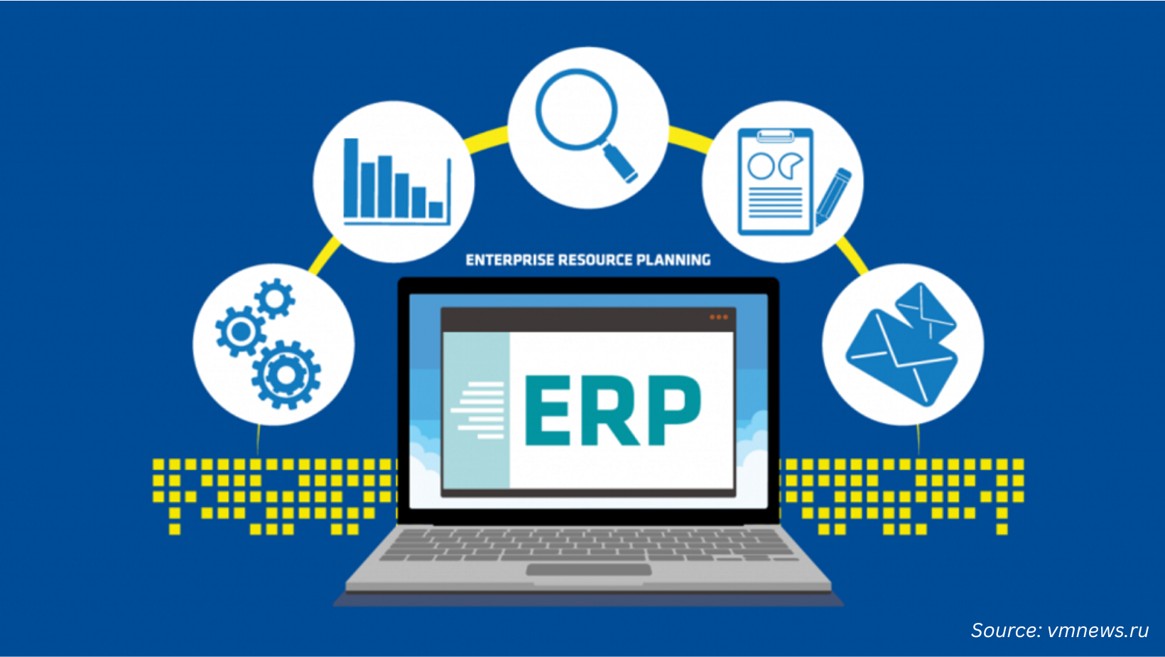How Smart Dispatching Software Is Solving the Biggesat Logistics Challenges Today
Published: 2025-09-16

Have you ever wondered why so many logistics operations struggle with delays, inefficiencies, and spiraling costs? That too, despite all the digital tools available today.
Well, the answer often lies in one overlooked element: the dispatch process. In an era where customers expect hour-specific delivery windows and real-time updates, traditional methods just don’t cut it.
Since it’s not just about moving goods anymore, it also includes managing time, compliance, customer experience, and operational costs. That’s where smart dispatching systems come in. These platforms are simplifying the way fleets operate. Plus, they’re actively solving the biggest pain points in modern logistics.
Are you still in confusion? So, to gain more clarification, let’s explore this in detail in this article!
1. The Route Optimization Problem
Ask any dispatcher juggling 5+ vehicles with dozens of stops. They will convey that the manual route planning isn't just inefficient. Even its near-impossible. With thousands of route permutations, it’s easy to miss the most fuel- and time-efficient option.
In such scenarios, smart systems apply algorithms and real-time data to build optimized routes in seconds. They factor in:
-
Traffic patterns,
-
Delivery time windows,
-
Fuel stops,
-
Load capacities,
-
Road restrictions, and everything in between.
For example, some smart solutions use AI and machine learning. This feature allows auto-schedule deliveries and batch loads. This is all based on proximity, delivery urgency, and even vehicle type.
Stat Insight: Fuel accounts for an average of 20–40% of operating costs in logistics. That's why route optimization alone can cut these costs massively by cutting miles traveled and idle time.
2. Scheduling Chaos
In high-volume operations, manually scheduling drivers is a massive time sink and extremely error-prone. This is more daunting when considering other factors as well, like:
-
Job availability,
-
Vehicle readiness,
-
Service regions.
With intelligent automated dispatch scheduling software, the task becomes very easy. The system automatically schedules jobs and notifies users of the required information. For example, best-fit drivers, factoring in availability, service zones, driver hours (HOS), and even rest periods.
This, ultimately, benefits the overall organization and the drivers, such as:
-
Reduced dispatcher workload.
-
Fewer missed or double-booked appointments.
-
Less confusion across teams.
Therefore, the fleet businesses should give it some thought. Even some trusted software allows dynamic, cloud-based scheduling. This is advantageous as it helps drivers and dispatchers stay connected through mobile apps. As a result, it reduces reliance on back-and-forth calls and texts.
3. Visibility Gaps
“What’s the status of that delivery?” This is one of the most common questions in logistics. Moreover, one of the most disruptive as well when systems lack real-time insight.
Hence, fleet firms should make the most of the smart dispatch tools. These days, they provide GPS-enabled tracking, which lets both dispatchers and customers follow the vehicle's progress in real time. If there’s a delay for any reason, the system updates “Expected Time of Arrival (ETA)” and notifies relevant stakeholders instantly.
And finally, this level of transparency builds trust with customers. Secondly, it helps dispatchers make on-the-fly adjustments without scrambling.
Bonus: Real-time visibility also enables better safety monitoring. That is tracking speed, driver behavior, and stop durations.
4. Customer Expectations
Today’s customers expect to know exactly where their package is and when it will arrive. Dispatching tools bridge that gap by offering:
-
Live delivery status updates,
-
Text/email notifications,
-
Easy rescheduling options
-
Feedback channels post-delivery.
For service-based fleets, these systems can even prep technicians before arrival. That property ensures they have the right tools and parts, so there's no delay situation.
User-Centric Tip: Giving customers visibility reduces calls to support and improves satisfaction ratings, especially in B2C operations.
5. The Data Deficit
One of the most undervalued features of dispatching platforms is their ability to collect and analyze operational data. Whether it is to calculate the idle time or the delivery cost per mile.
On the flip side, these systems deliver a full suite of performance metrics. With the help of the data, fleet managers can identify:
-
Underutilized assets,
-
High-performing routes,
-
Driver efficiency,
-
Fuel waste patterns.
Indeed, over time, these insights assist businesses with several key advantages. To name a few, some of them are given below:
-
Drive smarter business decisions,
-
Making sharper forecasts,
-
Streamlining operations.
6. Regulatory Compliance
Hours of Service (HOS) rules, safety inspections, and e-logs are a regular part of fleet management. But manually tracking these is a hassle.
However, with modern solutions, drivers log hours electronically, and dispatchers can monitor compliance in real time. This, ultimately, keeps operations ready for audits and helps avoid penalties.
Compliance Bonus: Integrated tools can notify drivers and fleet managers of pending HOS limits, missed check-ins, or expired certifications.
7. Field Disconnection
Gone are the days when drivers needed to call dispatch for every route change or job detail.
Today’s systems offer mobile apps and onboard tools that keep drivers informed. Plus, they provide updates to the offices without extra legwork. In short, the field teams receive:
-
Real-time updates,
-
Route changes,
-
Job instructions.
And they can send back:
-
Delivery confirmations,
-
Customer notes,
-
Photos or signatures.
This two-way communication improves accountability and speeds up response times.
8. Fuel Burn and Margins
Rising fuel prices are squeezing margins across logistics. Every wasted mile, idle minute, or inefficient detour chips away at profitability. Nevertheless, by combining intelligent routing, vehicle utilization, and live traffic data, smart platforms reduce unnecessary trips and improve vehicle load efficiency.
Even small efficiency gains add up across dozens of vehicles.
Example Insight: The experts say that using automated dispatch scheduling software can reduce miles-per-stop and fuel used per delivery. This points out fewer miles. That will result in fewer gallons and better margins.
9. Poor Scalability
Traditional software solutions often hit a wall as companies scale, either due to storage limits or clunky interfaces.
But cloud-first dispatch platforms are inherently scalable. Whether you're managing five trucks or 500, the system grows with your fleet. It assists you in supporting more users, more integrations, and more automation as you expand.
Scalability Tip: Choose a platform with API support and modular add-ons so you can customize features without breaking the system.
10. Training and Onboarding Gaps
A great system is useless if no one wants to use it. So, the best dispatch tools offer intuitive interfaces with:
-
Easy-to-read dashboards,
-
Drag-and-drop scheduling,
-
Minimal learning curves.
This encourages adoption not just by managers, but also by field teams and back-office staff. Ultimately, when users feel empowered by the platform, they're more likely to use it consistently and correctly.
How Different Sectors Gain from Smart Dispatching?
The right software brings value to most fleet-based operations. Some of the prominent beneficiary industries are given below!
A. Third-Party Logistics (3PL) & Parcel Delivery
In the race for same-day and even one-hour delivery, 3PLs can’t rely on manual coordination. Dispatch systems help:
-
Batch orders efficiently based on delivery windows.
-
Automate route optimization for high-volume packages.
-
Share real-time updates with customers and client companies.
As a result, you can do more on-time deliveries and have fewer missed windows, along with better service-level agreement (SLA) compliance.
B. Construction & Field Services
Whether it’s a technician, inspector, or repair crew, these roles need prep and precision. Dispatch platforms equip them with:
-
Pre-trip job details, part checklists, and client history.
-
Route optimization to arrive with the right tools, the first time.
-
Communication features for immediate updates on-site.
A properly equipped tech means fewer return visits and higher first-time fix rates.
C. Retail & Wholesale Distribution
The middlemen need flexible fulfillment. This is especially prominent with growing e-commerce demands. The right platforms enable:
-
Real-time visibility into shipment progress.
-
Ability to accommodate last-minute orders.
-
Integrated feedback loops to learn from every delivery.
Ultimately, no matter the sector, smart dispatching closes the gap between operations and customer promise.
How to Implement It Properly?
Even the smartest technology falls flat if implemented poorly. One key reason businesses hesitate to adopt advanced software is the fear of disruption. But with a well-executed rollout strategy, implementation can be smooth, scalable, and even exciting.
Here’s how smart companies do it:
-
Start with a pilot fleet – Begin testing with a small group of vehicles or service areas. It reduces risk and provides measurable results.
-
Involve key team members early – Let dispatchers, drivers, and managers engage in feedback. It increases buy-in.
-
Lean on vendor support – Partner with expert providers who guide setup, integration, and real-time training.
-
Don’t skip training – It’s a continuous learning process. Additionally, the easier the interface, the faster your team adopts it.
Pro Insight: Successful implementations lead to faster ROI. This is because dispatch software is an investment in uptime, efficiency, and growth.
What’s The Future of Dispatching Technology?
We’re just scratching the surface of what’s possible. On the flip side, dispatch platforms are quickly evolving into full-scale operational command centers, powered by:
-
Predictive analytics,
-
Telematics,
-
Real-time customer feedback.
With upgradation, fleet managers will be able to anticipate problems before they even happen. Integrated sensors, AI, and smart planning engines will enable dispatching decisions that are not just efficient but also proactive and autonomous.
Final Thoughts
The logistics industry is changing fast. Demand is higher, delivery windows are tighter, and efficiency is a necessity.
In this landscape, the right tools are no longer a “nice to have.” They are the backbone of any scalable, responsive, and competitive fleet operation. From optimizing routes to strengthening customer relationships, the proper platform not only saves time and cost. Instead, it transforms how your business runs every day.
About the Author
 Olivia is a digital marketing expert at Outreach Monks, crafting successful strategies for clients. She's a valuable contributor, sharing content and insights on industry updates. Olivia's articles offer a fresh perspective on emerging trends. Her passion for the field is evident in all her contributions.
Olivia is a digital marketing expert at Outreach Monks, crafting successful strategies for clients. She's a valuable contributor, sharing content and insights on industry updates. Olivia's articles offer a fresh perspective on emerging trends. Her passion for the field is evident in all her contributions.
About the Reviewer
 Sanyukta Deb is a seasoned Content Writer and Team Leader in Digital Marketing, known for her expertise in crafting online visibility strategies and navigating the dynamic digital landscape. With a flair for developing data-driven campaigns and producing compelling, audience-focused content, she helps brands elevate their presence and deepen user engagement. Beyond her professional endeavors, Sanyukta finds inspiration in creative projects and design pursuits.
Sanyukta Deb is a seasoned Content Writer and Team Leader in Digital Marketing, known for her expertise in crafting online visibility strategies and navigating the dynamic digital landscape. With a flair for developing data-driven campaigns and producing compelling, audience-focused content, she helps brands elevate their presence and deepen user engagement. Beyond her professional endeavors, Sanyukta finds inspiration in creative projects and design pursuits.
















Add Comment